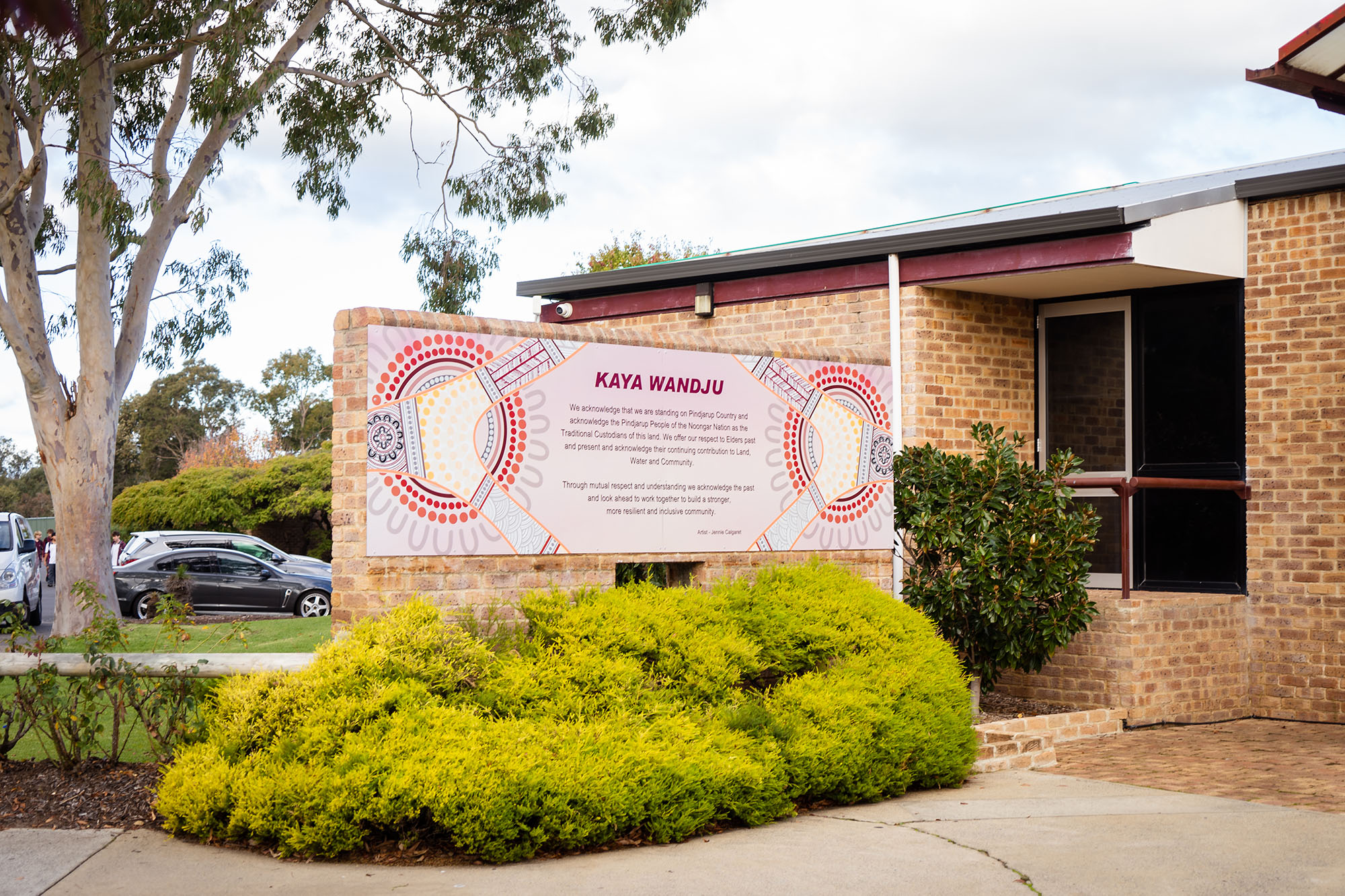Indigenous
PINDJARUP PEOPLE and COUNTRY
Our school community exists on Pindjarup Country which is Noongar Boodja. Noongar country covers the entire south-western portion of Western Australia. The Pindjarup people have gathered in this area for at least 45,000 years. For them, the area was a seasonal gathering place, with important sites of ceremonial significance. Pindjarup were “people of the wetlands”, coastal estuaries and the wetlands.
Pindjarup tribal estates extended over an estimated 4,700 km2 taking in Pinjarra, Harvey and Leschenault Estuary. They were also present on the Murray River’s lower reaches in Pinjarra and the Peel-Harvey Estuary.
As a people of the wetlands, the Pindjarup were famed for their fish-traps, and used their knowledge of the six seasons in the southwest to hunt, fish and gather, making full use of the environmental resources from the coastal estuaries and sand-dunes, through the interior lakes and wetlands to the more fertile soils of the Darling Scarp foothills and ridgelines in sustainable ways with their lands. Western long-necked tortoises, black swans, ducks, and migratory birds formed an important part of their diet.
Their knowledge and understanding of country reflect a deep spiritual and physical connection to Country that we hope to better understand.
The Department of Planning, Land and Heritage titled South West Native Title Settlements (SWNTS) map. This map shows the vastness of the Noongar Boodja.
It also outlines the Indigenous Land Use Agreements (ILUAs) and the Tindale Dialect Boundaries and Towns. Norman B Tindale’s attempted to record First Australian language groups. They illustrate the diversity of these languages.
Beginning in the 1920s, anthropologist Norman B Tindale spent over 50 years researching First Australian languages and cultures, attempting to identify all the languages spoken prior to colonisation. In 1974, he published the book Aboriginal Tribes of Australia which contains these maps.
Tindale’s maps illustrate the large number of First Australian languages spoken before colonisation. Traditionally, the First Australians were an oral culture, which meant that languages were not written down. More than 250 languages were spoken, including 800 dialects, sign languages and other non-verbal forms of communication. First Australians often spoke more than one language or dialect – a practice that continues today. As well, colonisation had displaced First Australians and disrupted the speaking and transmission of language.
